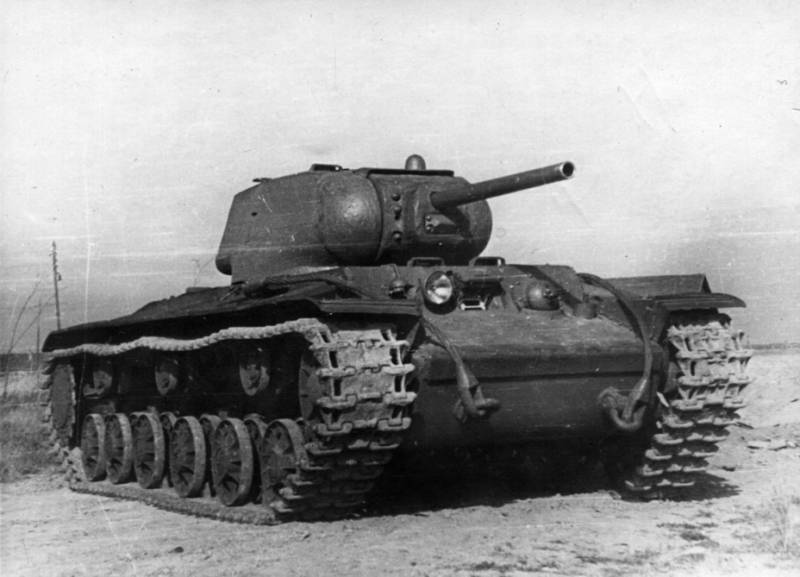KV-1S: "intermediate" tank, which turned out to be unclaimed

The Soviet heavy tank "Kliment Voroshilov" or KV-1 was rightfully considered an invincible fighting vehicle, until the end of 1942, when the Wehrmacht got the "Tiger". The crews of the Red Army accomplished a huge number of feats on this tank, and the Germans nicknamed him "ghost" because most of their guns could not harm him.
Meanwhile, despite all the advantages, the KV-1 also had significant drawbacks, including poor maneuverability and unsuccessful sights. However, the main problem of the tank was its weight, which instead of the 42 tons planned during development, sometimes reached 50, which was associated with additional equipment and a new cast turret.
As a result, such a significant "bust" with the mass could not but affect the transmission, which, even without that, in the KV-1 was not very reliable. And the 500-horsepower diesel engine could hardly cope with such a “colossus”.
As a result, in July 1942, a “lightweight” version of the KV-1S appeared, which was produced until September 1943.
The problem with the mass in the modernized tank was solved primarily by reducing the thickness of the armor. In addition, the dimensions of the hull were also reduced, as well as the chassis units were lightened.
Other positive aspects include upgraded cooling and lubrication systems, the manufacture of a new cast tower with five glass blocks and the replacement of many scarce parts.
The main armament of the KV-1S was a 76 mm ZiS-5 cannon and three 7,62 mm DT machine guns. The ammunition load for the ZIS-5 tank gun was increased by 24 rounds. The crew consisted of 5 people.
As a result of the modernization, the mass of the tank decreased to 42,5 tons, and its speed on the highway increased from 34 to 43 km.
Meanwhile, the release of the KV-1S had to be stopped, since in most respects it was similar to the T-34, but it was much inferior to it in maneuverability and was more difficult to manufacture.
Information